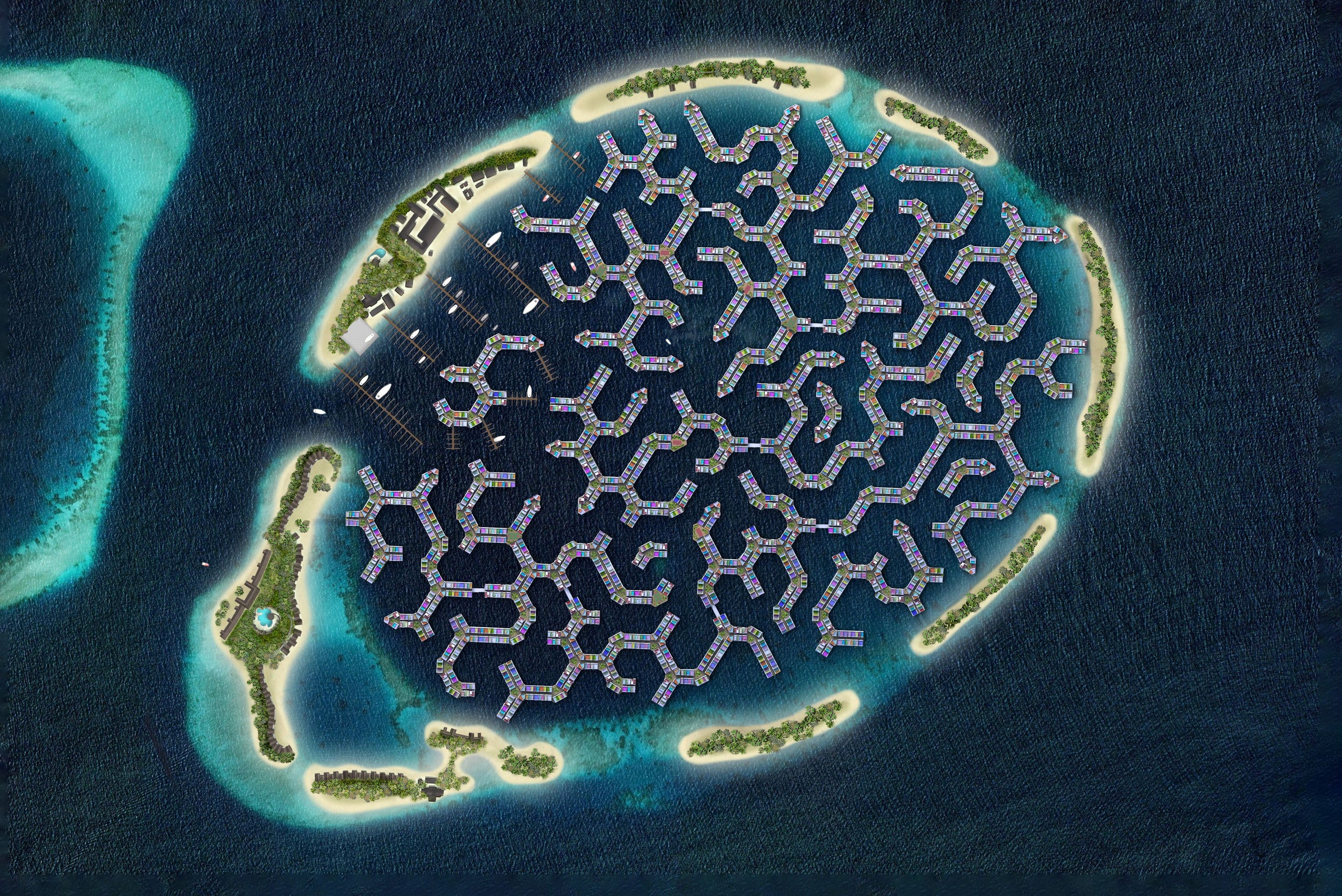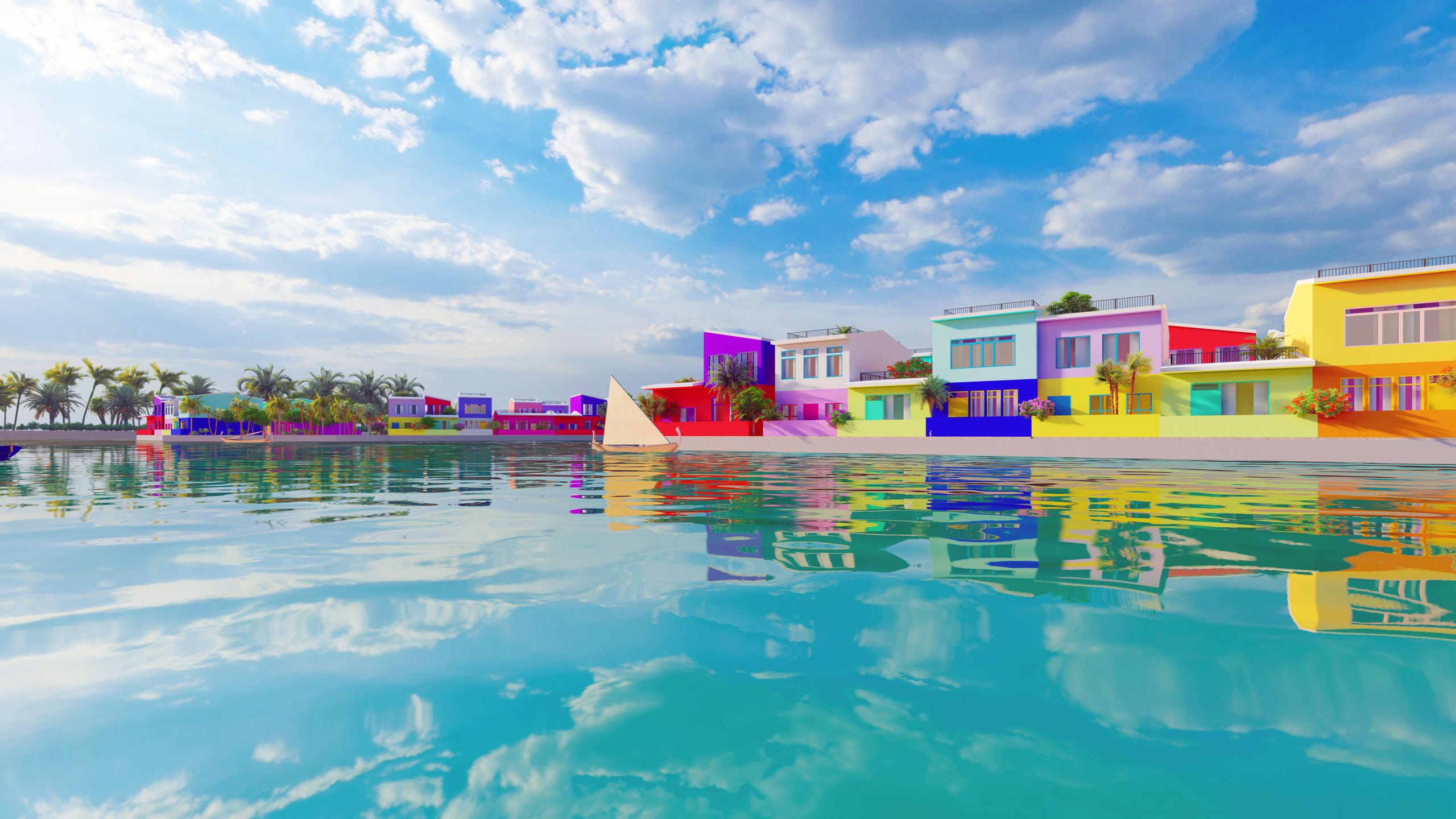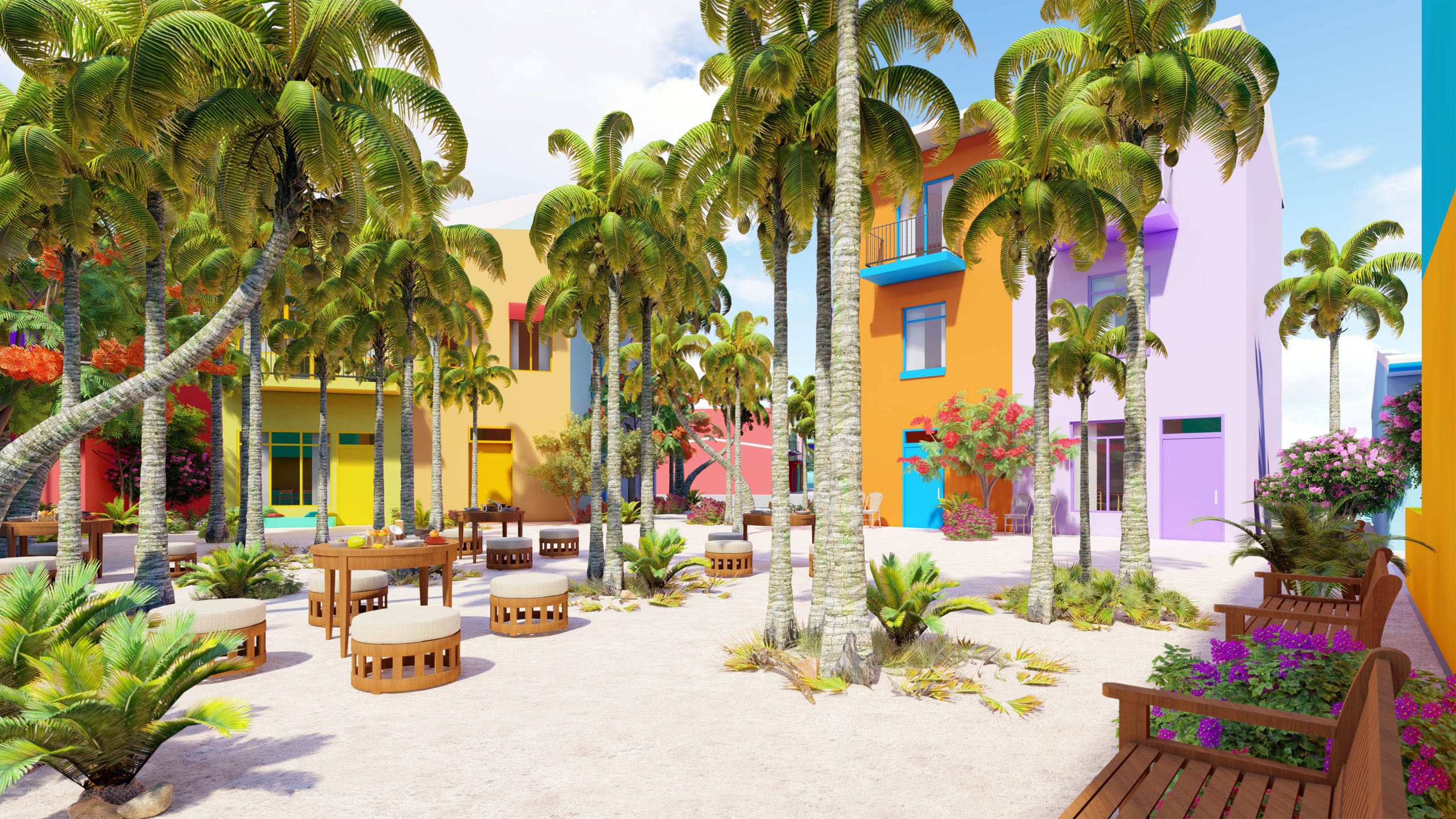Designed in a pattern similar to brain coral, the city will consist of 5,000 floating units including houses, restaurants, shops and schools, with canals running in between. The first units will be unveiled this month, with residents starting to move in early 2024, and the whole city is due to be completed by 2027.
Waterstudio proposes the Maldives Floating City as a solution to rising sea levels
By Mens Gear
2023.March
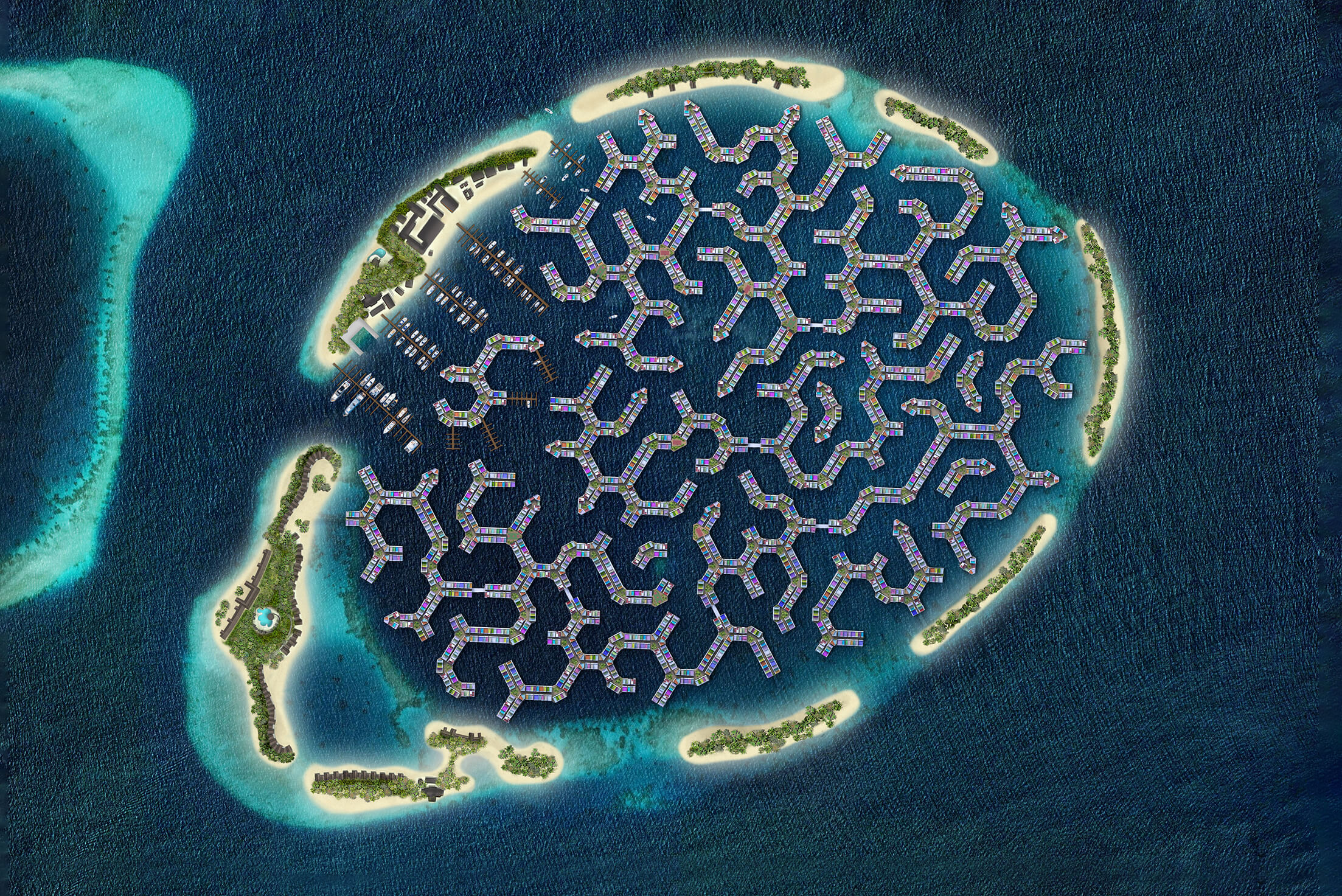
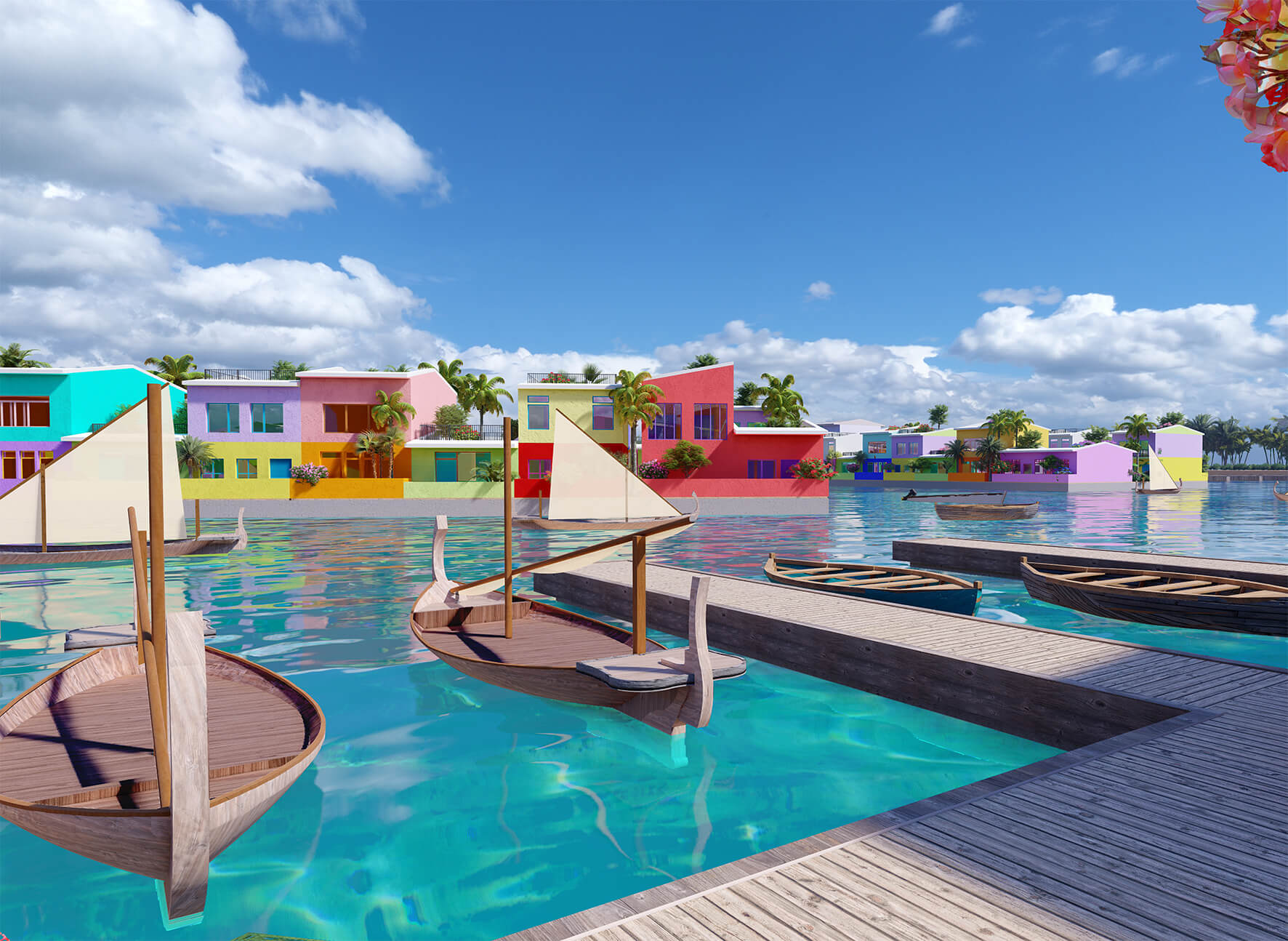
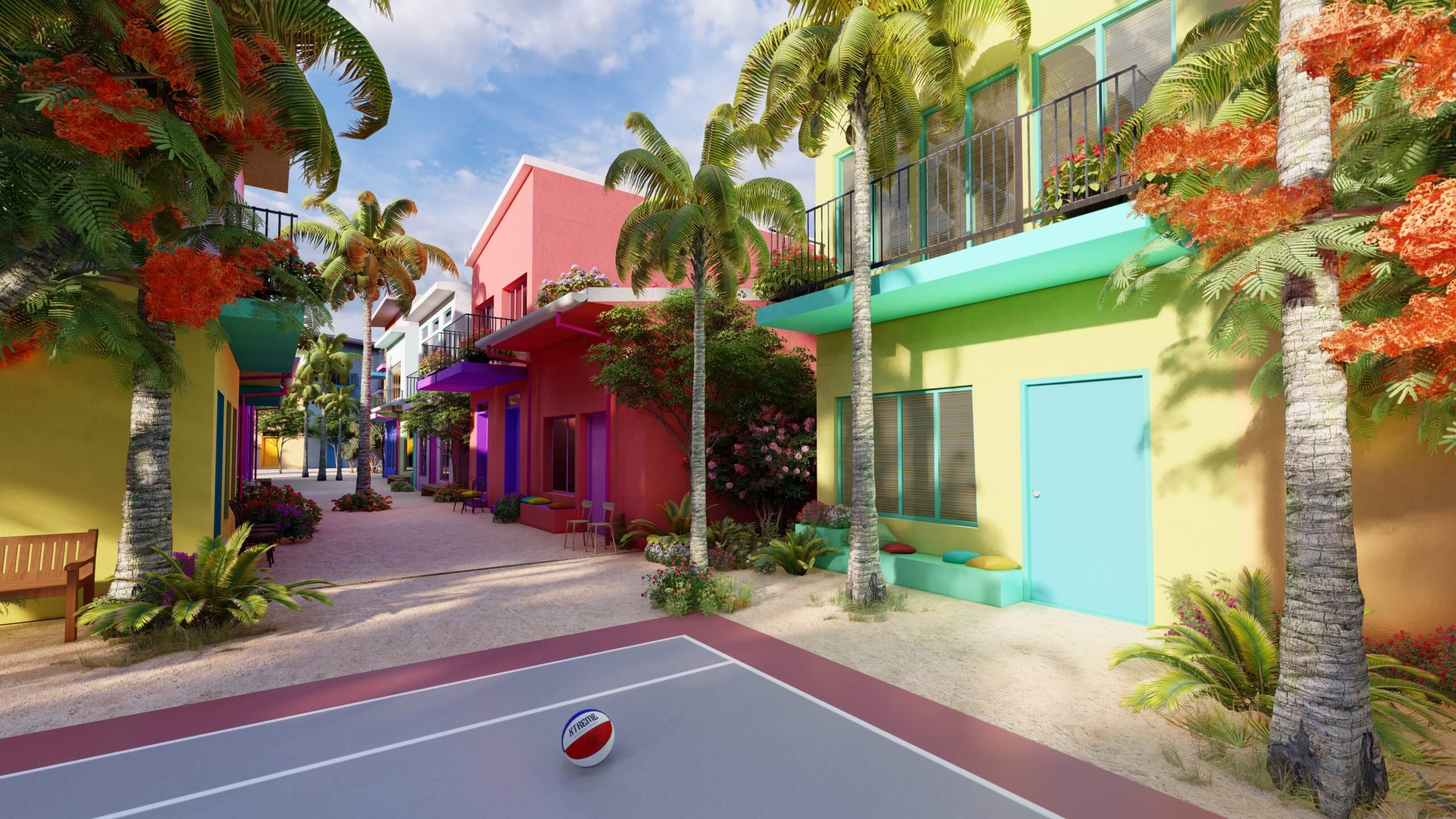
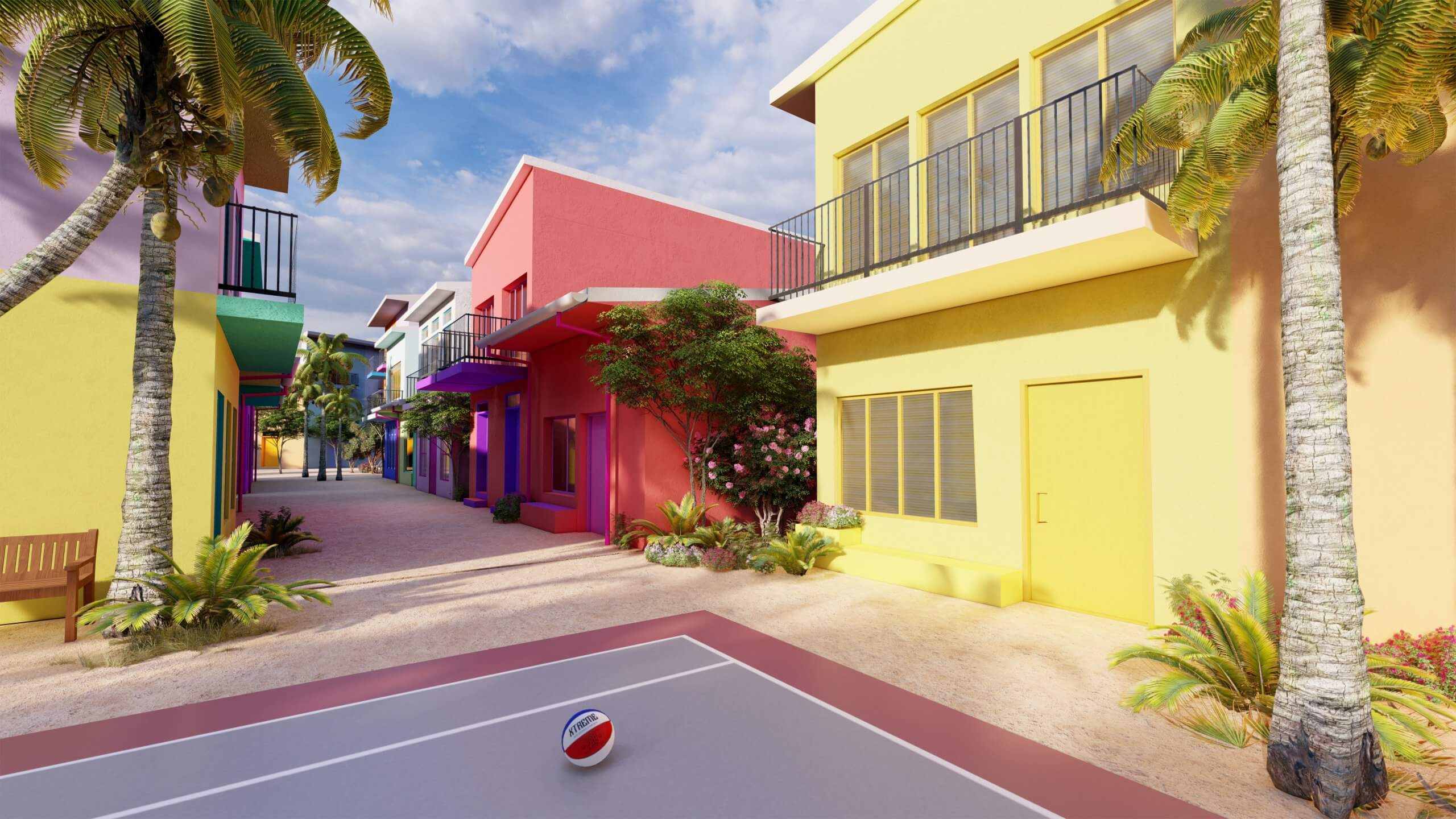
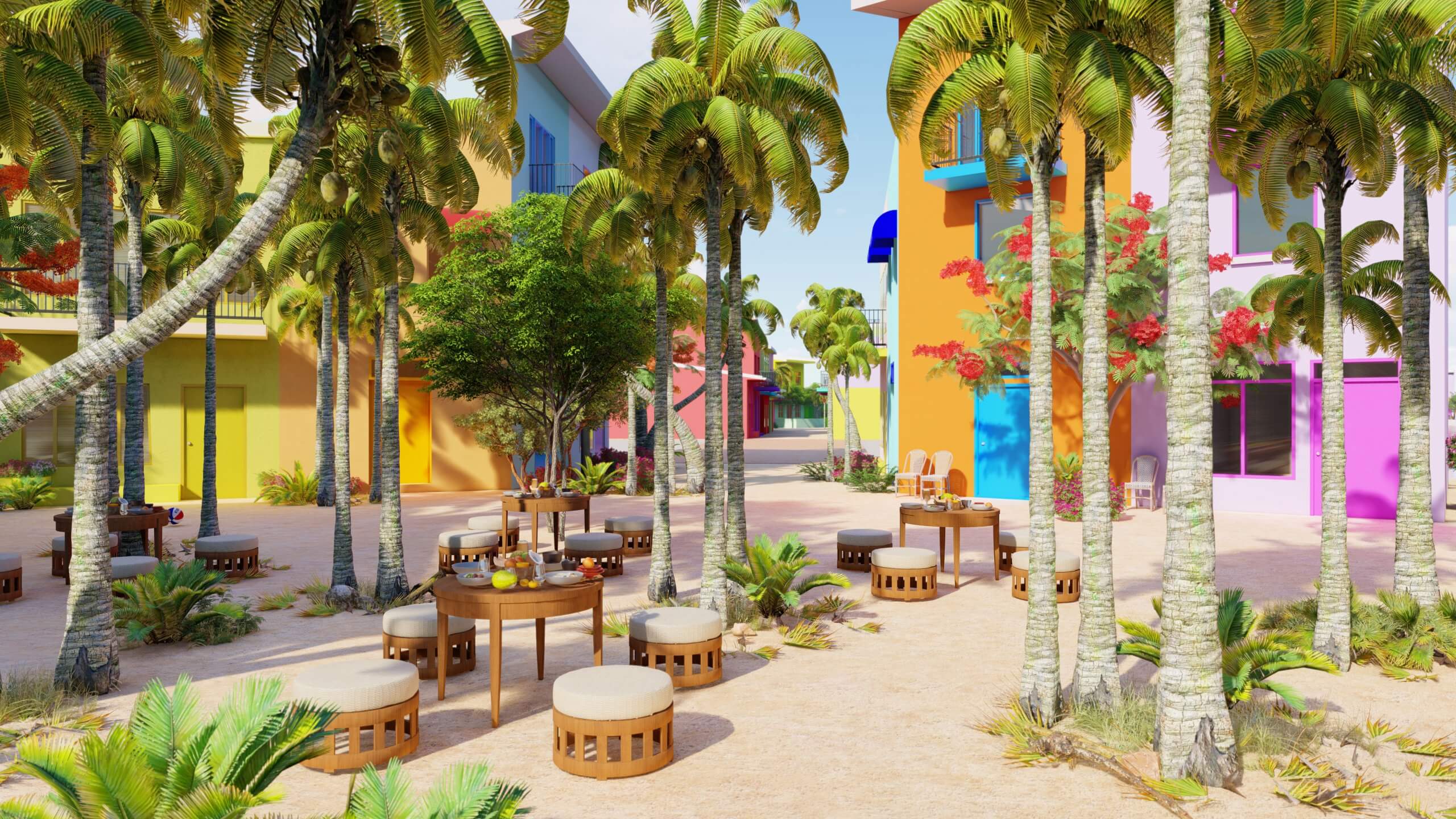
A vízen lebegő épületek mindig izgalmasak, ez a folyón úszó színház pedig még meglepően tágas is odabent.
By Ujlaky István
Player.hu
2023.march.21
A holland Waterstudio – ahogy a neve is mondja – a vízen lebegő épületekre szakosodott, de szerencsére nemcsak olyan megaprojektekkel foglalkozik, mint az elmúlt hónapokban bejelentett hipermodern úszóházak Panama északi partjainál vagy a Maldív-szigetekre tervezett, emberi agyat idéző úszó város.
Szerencsére tehát foglalkoznak kisebb léptékű épületekkel is, mint például az idén év elején átadott úszó színház Lyon 7. kerületében, a Rhône partján, a Gallieni híd és a Leclerc sugárút találkozásánál.
A színházat a L’île O kulturális egyesület számára tervezték, a Patadôme Théâtre d’Irigny támogatásával, elsősorban próbákhoz és a fiatalabb korosztálynak szóló előadásokhoz.
Önmagában is extravagáns a geometrikus burkolati elemekből felépülő külső homlokzat, de talán még meglepőbb, mennyire tágasnak tűnik a nézőtér belülről – legalábbis a fényképek alapján.
A Waterstudio tehát továbbra is aktív, és teljesen biztosak vagyunk abban, hogy találkozunk még a terveikkel, akár a legváratlanabbakkal is.
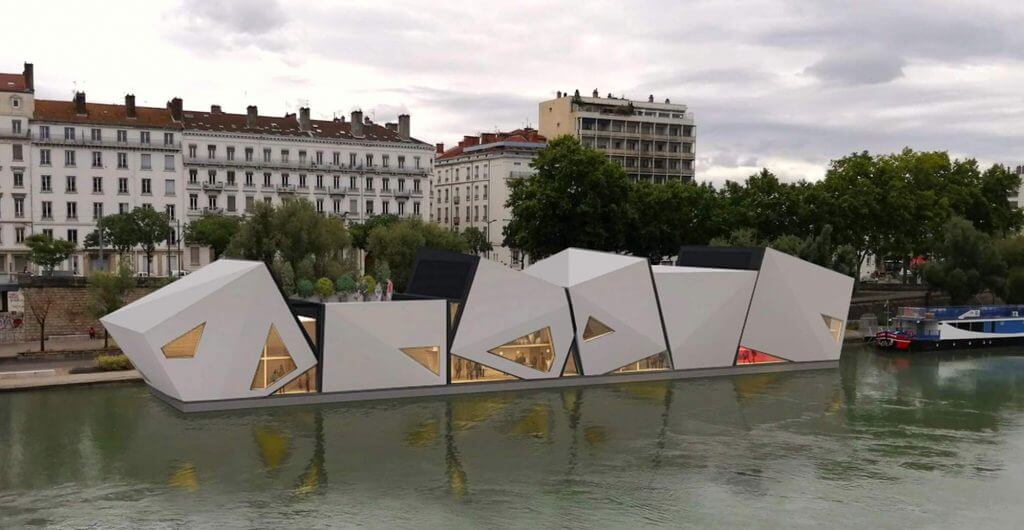
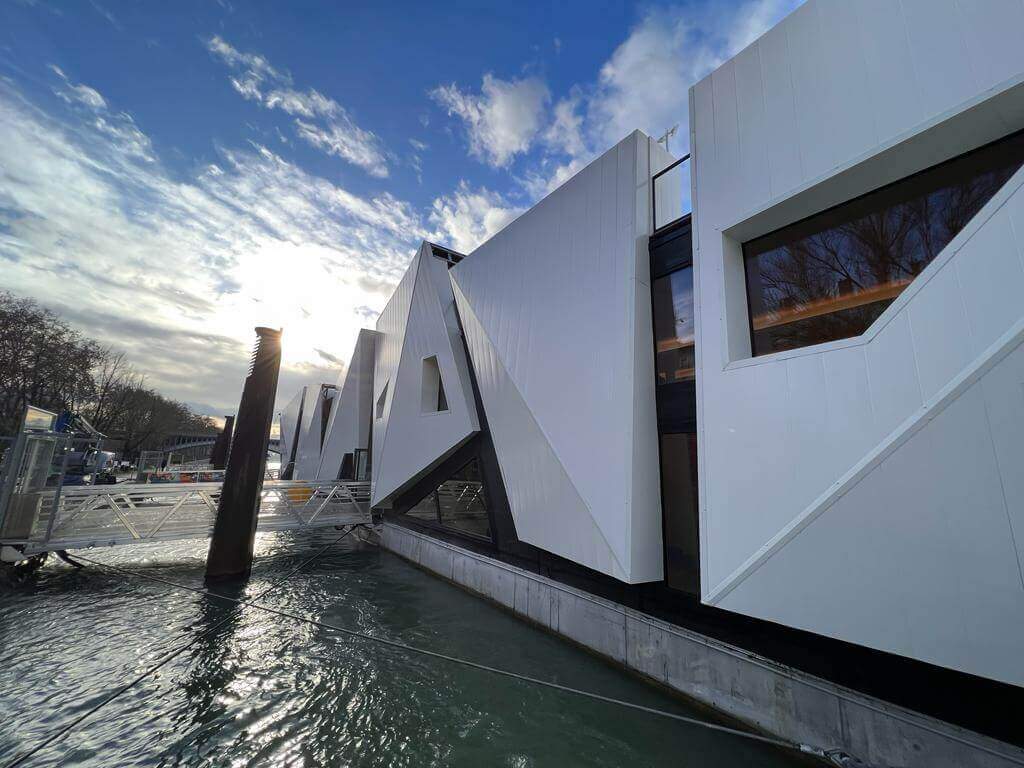
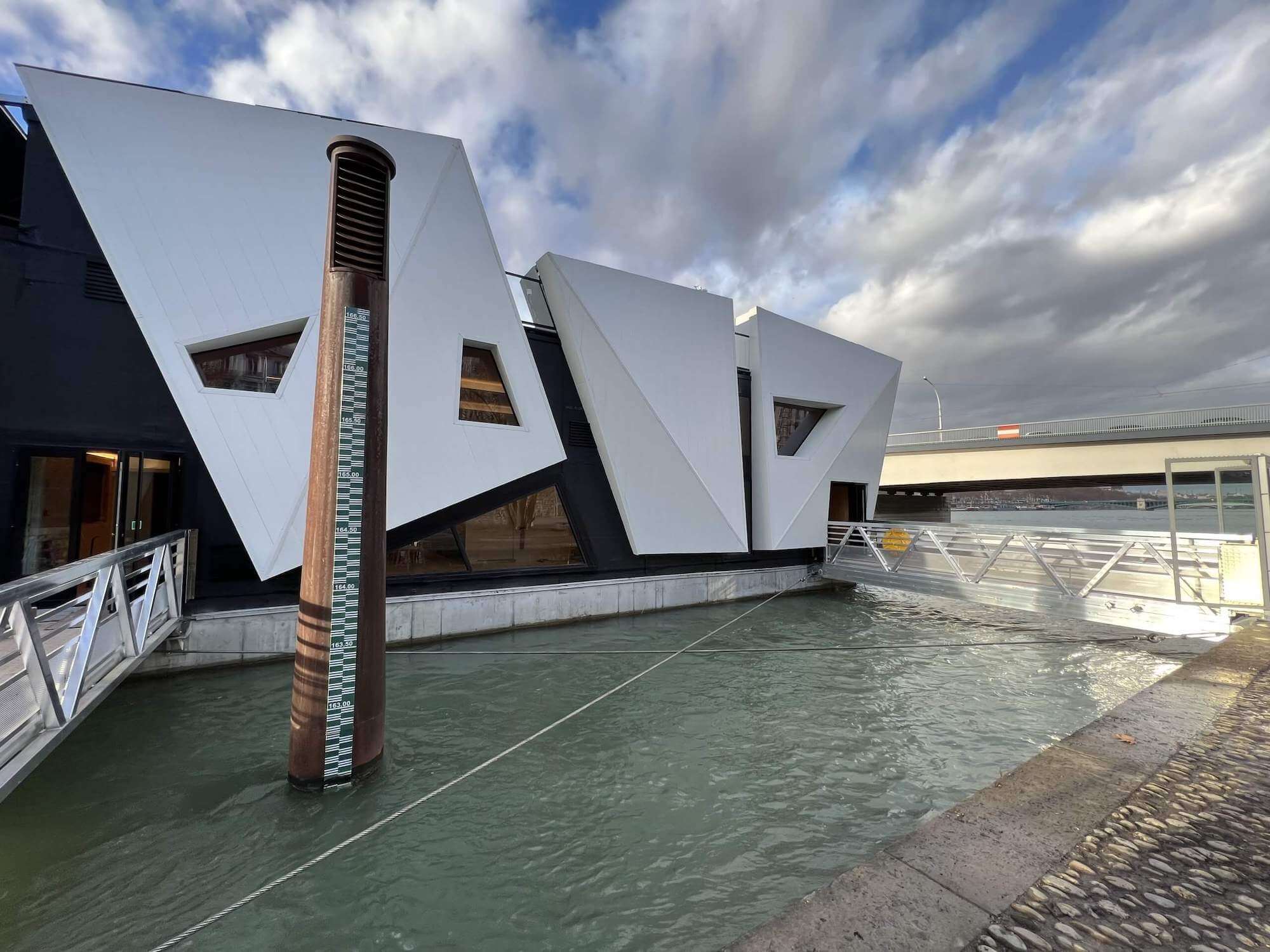
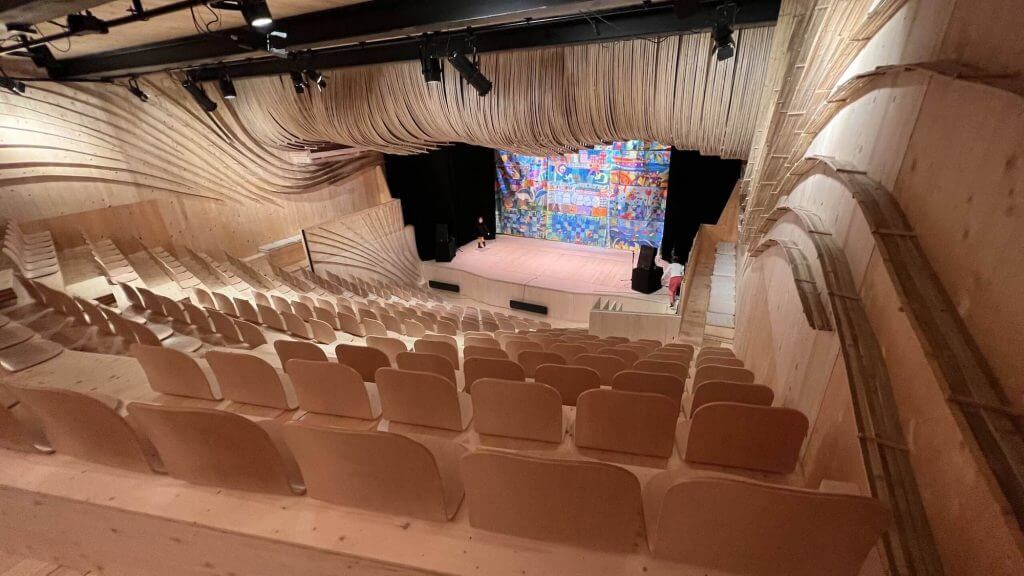
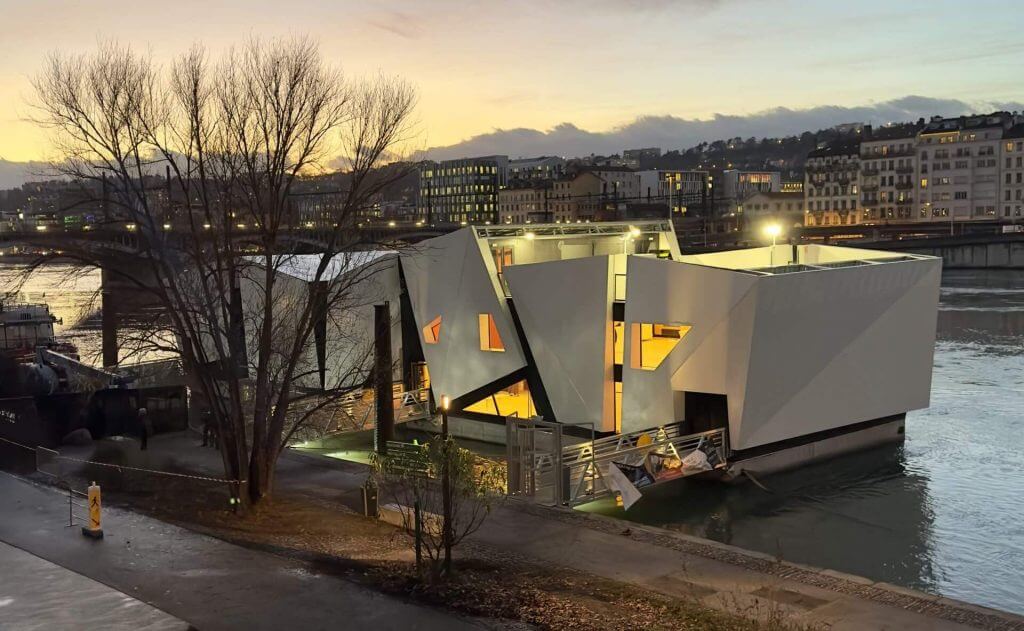
Maldives Floating City reinvents living in a water world
InHabitat
2022.July.27

This design was in line with the concept of living with nature and learning to improve and respect natural coral. Furthermore, Maldives is the global center for coral protection.

Therefore, the housing are “scarless developments” because of their attempt to not damage the environment on which they are built. Sustainability of the new community is also a top priority, with the developers finding new methods to “interact in a durable way with our surroundings.”
In specific focus here is how to increase sustainability using water. Maldives Floating City is a development of Dutch Docklands in partnership with the Government of Maldives. Masterplan architect for the project was Waterstudio from the Netherlands. The location: a lagoon close to the capital Male and the International Airport at over 500 acres in size.

Additionally, the city is mixed use, with residential, hotels, shopping and restaurants located within the grid. Sales will start soon, and expressions of interest can be made on the city’s website. Most importantly, this is the first floating city with thousands of houses with full governmental support that allows for legal title deeds for owners. The floating city also offers the possibility to obtain a residence permit with the purchase of a house, which means internationals can live here semi permanently in Maldives.
On the other hand, the design of the homes was inspired by the history of this seafaring nation in the tropics. The city is designed as a boating community, using canals as the main infrastructure for shipping and travel. Land-based travel is restricted to walking, biking and noise-free electric scoots, with no cars allowed.

The Maldives Floating City also has green technology, including a smart grid that responds to dynamic demand, weather and climate change. Sustainable development technologies protect the marine ecosystem.
All in all, the city aims to create new habitat for the marine ecosystem it is built on rather than destroying it. New artificial coral banks will be attached to the underside of the city, which can help coral attach and grow naturally. The coral reefs of the lagoon, in turn, act as a natural wave breaker to protect against storm damage.
Epic layout photos showcase the vision for a floating water city in Maldives
By Scott Gleeson
Usa Today
2022.June.22
A Dutch architectural firm is poised to build an innovative floating city in the Maldives, a Southern Asia nation of islands located in the Indian Ocean.
The city, designed by Dutch firm Waterstudio, is slated to house 20,000 people in a web of 5,000 floating buildings, all of which will include homes, shops and even schools, according to the official website for Maldives Floating City. They’ll all be interspersed as a mass of modular floating platforms in the pattern of a brain coral.
The floating city will be located just 10 minutes by boat from Male, the capital of the Maldives. The project is headed by Waterstudio in collaboration with developer Dutch Docklands and the local government in Male. Koen Olthuis told CNN the city will feature studio apartments for $150,000 and family units for $250,000.
Utopian desert city Telosa: Billionaire Marc Lore outlines how he will build the inclusive city
“With its unique location in a paradisiacal setting, we are extremely proud to launch the first Floating City in the world,” said Paul HTM van de Camp, CEO of Dutch Docklands, in a news release. “This will be an amazing place where locals and foreigners can buy their dream property at affordable prices”
The designs of the floating city are aimed to offer a solution to the threat of rising sea levels for generations ahead, Maldives president Mohamed Nasheed said in a news release.
“This Maldives Floating City does not require any land reclamation, therefore has a minimal impact on the coral reefs. What’s more: giant, new reefs will be grown to act as water breakers. Our adaption to climate change mustn’t destroy nature but work with it, as the Maldives Floating City proposes. In the Maldives we cannot stop the waves, but we can rise with them.”
Below is a look at some of the epic images, provided to USA TODAY by Waterstudio.
A floating city is coming up in Maldives amidst rising sea level
By C. Krishnasai
Wion
2022.June.22
(Credit: Waterstudio.NL/Dutch Docklands) The project is slated to be finished by 2027 Photograph:( Agencies )
STORY HIGHLIGHTS
The first units will be unveiled this month (June), with prices starting at $150,000 for a studio apartment, and going up to $250,000 for a family home
Amidst looming environmental crisis and rising sea level, a floating city is being made just 10-minute boat ride from Maldives’ Male city in the Indian Ocean.
According to CNN, the city will be designed resembling a brain coral. It will consist of 5,000 floating units including houses, restaurants, shops and schools, with canals running in between.
The first units will be unveiled this month (June), with prices starting at $150,000 for a studio apartment, and going up to $250,000 for a family home.
The developers are expecting residents to begin moving into the island in early 2024, with the whole city due to be completed by 2027.
The Maldives Floating City, developed jointly by the Dutch firm Waterstudio and the Maldives government, aims to house 20,000 people in less than five years.
Notably, this will be the second floating city in world. The first one was announced in April by the United Nations off South Korea’s second-largest city, Busan. Known as Oceanix City, it plans to provide homes for a community of 12,000 people, potentially rising to 100,000, with construction due to start in 2023.
This is “new hope” for the more than half a million people of the Maldives, said Koen Olthuis, founder of Waterstudio, the architecture firm that designed the city.
“It can prove that there is affordable housing, large communities, and normal towns on the water that are also safe. They (Maldivians) will go from climate refugees to climate innovators,” he told CNN.
Features of Maldives Floating City includes rainbow-colored homes designed to attract local people. Wide balconies and seafront views are added onto each home. For transportation, residents will get around on boats, or they can walk, cycle or drive electric scooters or buggies.
 “Tech is not the problem, but it is the regulatory framework that takes time to adjust,” Olthuis explained.
“Tech is not the problem, but it is the regulatory framework that takes time to adjust,” Olthuis explained.
“Money talks and so this means when authorities understand that the cost of floating development are lower than the cost of destruction of waterfront infrastructure and properties then this next shift in city development will fly.”
Te wyspy znikną z powierzchni Ziemi. Jedynym ratunkiem jest pływające miasto
W emitowanym w poniedziałek 20 czerwca w Polsat News programie Debata Dnia poseł Janusz Kowalski z Solidarnej Polski przekonywał, że zmiany klimatyczne to tylko ideologia, a na świecie nic się nie zmienia, bo “czasami jest ciepło, a czasami jest zimno i zawsze tak było”. Tymczasem po drugiej stronie świata, mieszkańcy Malediwów przygotowują się do tego, że ich kraj w ciągu najbliższych stu lat całkowicie zniknie z powierzchni Ziemi.
Pływające miasto na Malediwach nabiera realnych kształtów. Pierwsi mieszkańcy już w 2024
By Daniel Górecki
PodróŻe
2022.June.20
Malediwy to najniżej położony, przez co najbardziej zagrożony zalaniem na skutek stale podnoszącego się poziomu oceanów, teren na świecie – nic więc dziwnego, że lokalne władze robią wszystko, by stawić czoła rosnącemu zagrożeniu, a jednym z pomysłów są pływające wyspy.
O projekcie pływającego miasta o nazwie Maldives Floating City (MFC), realizowanym przez rząd Malediwów i Waterstudio, po raz pierwszy usłyszeliśmy już w ubiegłym roku, ale teraz staje się on rzeczywistością i zaczyna nabierać kształtów. Pierwsze jednostki mieszkalne zostaną ujawnione jeszcze w tym miesiącu, a mieszkańcy zaczną się do nich wprowadzać na początku 2024 roku – całe miasto ma zostać ukończone do 2027 roku.
O czym konkretnie mówimy? O mieście położonym w okolicy Male, czyli stolicy Malediwów, składającym się z 5000 pływających jednostek, wśród których znajdują się domy, restauracje, sklepy, hotele czy szkoły, zdolnym do pomieszczenia 20 tys. osób. Jak podkreślają od początku pomysłodawcy, nie chodzi tu o żaden eksperyment czy futurystyczną wizję, ale realne i praktyczne rozwiązanie coraz poważniejszego problemu.
Warto tu podkreślić, że aż 80% obszaru Malediwów znajduje się na wysokości nie większej niż metr nad poziomem morza, a prognozy wskazują, że przed końcem wieku o mniej więcej tyle podniesie się poziom oceanów, co oznacza całkowite pochłonięcie przez wodę większości tego terenu.
Pływające miasta pozwalają zaś mieszkańcom archipelagu, których jest obecnie ponad pół miliona, z nadzieją patrzeć w przyszłość – rząd i biuro odpowiedzialne za projekt chcą za ich sprawą udowodnić z kolei, że to opcja zrównoważona, praktyczna, niedroga i bezpieczna, po którą w przyszłości najpewniej sięgać będą również inne kraje zagrożone przez rosnący poziom wód.
Wracając do samego Maldives Floating City (MFC), autorzy pomysłu chcą przyciągnąć mieszkańców kolorowymi budynkami mieszkalnymi z przestronnymi tarasami i niepowtarzalnym widokiem morza, oferując przy okazji konkurencyjne ceny – dla porównania można dodać, że we wspomnianym Male trudno o podobne warunki, bo 200 tys. osób jest tu dosłownie upchniętych na obszarze wielkości 8 km2. Mieszkańcy będą mogli się poruszać między jednostkami za pomocą łodzi, a w ramach jednostek pieszo, rowerami, hulajnogami czy pojazdami typu buggy.
Miasto powstaje w lokalnej stoczni, a następnie kolejne jednostki są dostarczane na miejsce i przymocowywane za pomocą stalowych teleskopowych pali do zamontowanej na dnie betonowej konstrukcji. Takie rozwiązanie pozwala na ruch całości i dryfowanie razem z falami, które nie powinny jednak stanowić większego problemu, bo otaczające miasto rafy koralowe tworzą naturalną barierę.
Jednocześnie miasto nie stanowi dla nich zagrożenia (a także dla całego okolicznego środowiska), co zostało dokładnie sprawdzone przez specjalistów, a co więcej podwodna część jednostek zostanie pokryta specjalną pianką, wspomagającą naturalny rozwój koralowców.
Co ciekawe, pod koniec kwietnia dowiedzieliśmy się, że ONZ pomoże w realizacji podobnego projektu w Korei Południowej, a mianowicie Oceanix. Ma ono powstać w mieście Pusan, którego port znajduje się w pierwszej dziesiątce największych portów świata i pomieścić docelowo nawet 100 tys. mieszkańców.
Czytaj więcej na https://geekweek.interia.pl/podroze/news-plywajace-miasto-na-malediwach-nabiera-realnych-ksztaltow-pi,nId,6104637#utm_source=paste&utm_medium=paste&utm_campaign=chrome
LA COQUE XXL DU FUTUR THÉÂTRE FLOTTANT L’ÎLE Ô MISE À L’EAU
By Mélanie Fereira et Pauline Boutin
BFM Lyon
2022.May.25
C’est une étape cruciale dans le chantier du théâtre flottant L’Île Ô qui s’est déroulé hier à Lyon. Une coque en béton de 500 tonnes de béton, sur laquelle sera bâti le théâtre, a été mise à l’eau au port Edouard-Herriot.
Petit à petit, le mastodonte en béton s’est détaché du sol, aider par une grue de 56 mètres. Au total, il a fallu une heure et demie pour le déposer sur l’eau, une opération d’envergure et une prouesse technique.
“On a dû lever la charge, mais aussi la pivoter et l’avancer, explique David Lahille, porteur du projet L’Île Ô et pilote du chantier. C’est un convoyage long et c’était assez sensible”, raconte-t-il.
“Personne ne l’avait fait avant”
“C’est la plus grosse coque de bâtiment flottant en béton du monde. Personne ne l’avait fait avant. Même les grutiers qui soulèvent des grues n’avaient pas fait ce genre de levage, s’est félicité Jean-Philippe Amy, également porteur du projet L’Île Ô. Et c’est un grand soulagement “, confie-t-il le sourire aux lèvres.
Pour déplacer la grande coque, les ouvriers ont dû prendre des dispositions particulières, tellement la cuve est massive. “On avait même dû consolider un peu le quai pour qu’il tienne le coup”, explique Jean-Philippe Amy.
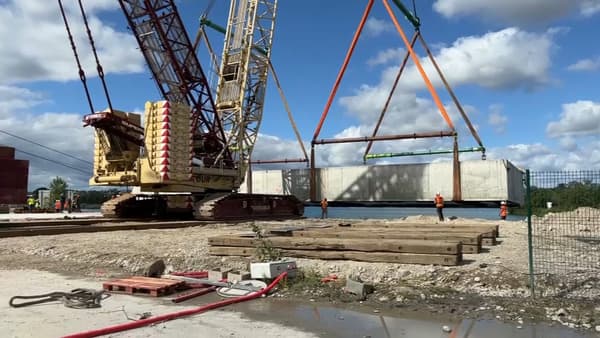
Après plus d’une heure de manipulation, la coque en béton de 38 mètres de long sur 11 de large a enfin flotté. Ce qui ressemble à une prouesse ne répond qu’à une simple loi de la phyisque, rappelle Grégoire Douillet, directeur commercial de Vicat France.
“C’est la poussée d’Archimède. On revient aux fondamentaux de la chimie. Dans l’imaginaire collectif, on pense que le béton ne flotte pas. Mais pourquoi il ne flotterait pas comme les autres matériaux ?”, interroge-t-il.
Cette étape cruciale franchie, le chantier est encore loin d’être terminé. Il va désormais se poursuivre sur l’eau pendant encore deux mois. “Très vite, on va avoir une superstructure en bois, pour faire les gradins des salles de théâtre. Ensuite, on va poser la vêture et on va voir se dessiner cette vague de cube qui est l’idée de l’architecte”, Koen Olthuis qui défend un projet “durable avec des matériaux écoresponsables”.
Ouverture à l’automne prochain
Ce théâtre flottant doit accueillir le public dans deux salles, l’une de 250 places, l’autre de 80 places sur les berges du Rhône. Le projet est porté par L’Île Ô, et par l’équipe du Patadrôme théâtre basé à Irigny pour un coût de 2,6 millions d’euros. La Ville et la Métropole, ainsi que le ministère de la Culture ont financé en partie cette vaste structure architecturale.
Le théâtre flottant rejoindra son port d’attache sur le Rhône à la fin du mois d’août, sur la berge Bertha Von Suttner. Le public pourra découvrir le nouveau de théâtre à partir de l’automne prochain.
Sea level rise is coming for cities. But who can afford to ‘float’ their way out?
:format(jpeg)/cloudfront-us-east-1.images.arcpublishing.com/tgam/RA7ESJ2SEFCXFKCQBBDA6NBUEQ.jpeg)
For the residents, living in Schoonship means intentionally living in the most climate responsive and environmentally sustainable way possible:ARCHITECT KOEN OLTHUIS/WATERSTUDIO.NL
When heavy rains batter Amsterdam, swelling the city’s waterways and threatening floods, one community is poised at the ready. Just off the bank of the northern Johan van Hasselt canal lies Schoonschip, a floating neighbourhood designed to rise with the water level. As the canal splashes beneath Schoonschip’s houses, inside, residents are living in what some architects see as the climate-resilient future of urban housing.
“You don’t necessarily need land to make houses,” says Marthijn Pool, co-founder of Space & Matter, one of the architecture firms that contributed to Schoonschip’s design. “Imagine making houses float: You combine the storm-water buffering with the potential of creating new residential areas? Then the residential areas are, from their conception, climate proof.”
This was the plan for Schoonschip, whose first residents – called “Schoonschippers” – began inhabiting their floating houses in December, 2018. Since then, the neighbourhood has become home to 46 households, connected by floating platforms to each other and to shore. For the residents, living in Schoonschip means intentionally living in the most climate-responsive and environmentally sustainable way possible: Heat comes from pumps that use aquathermal technology to extract warmth stored naturally in the canal below; electricity comes from solar panels connected to a shared grid; and roofs are partially covered by plants that absorb water, reflect sunlight and capture carbon dioxide from the atmosphere. There are no gas connections, nor private cars, but rather, a system for sharing electric vehicles and bikes with all residents.
In a country where about one-third of the land is below sea level, Schoonschip is an almost idyllic blueprint of a future where humans live in harmony with the water around them. But, the neighbourhood also lays bare a key challenge facing cities needing to adapt to flood risks exacerbated by climate change: How can climate resilient housing – like the kind residents of Schoonschip enjoy – be brought to scale as a solution for all city dwellers, and not just for those who can afford it?
Schoonschip residents are making an expensive investment in a climate-ready future, Mr. Pool says – and, currently, without any government aid. A home in the community costs 20 per cent more than a comparable one on solid ground – with options between €300,000 and €800,000 (approximately $400,000 to $1-million), according to news reports, compared to the national average of €428,000 ($578,000) – to account for the costs associated with making the homes float, installing solar panels and backup batteries, and implementing sewage systems.
“All that decentralized equipment and new layer of technology needs to be paid for, which you would normally have the municipality organize,” Mr. Pool says of the extra costs associated with the floating residences. “But as soon as you’ve done that initial, extra investment, you are independent.”
For homeowners, the cost becomes well worth it over time, he argues, noting that Schoonschip homes are future-proofed amid the growing threat of the climate crisis.
But scaling up floating neighbourhoods is tricky, and far from realized.
“You have to see Schoonschip as a nice step in the evolution of floating cities as they become more sustainable,” says Koen Olthuis, founder of the architecture firm Waterstudio, which contributed to the design of Schoonschip and has led projects to design floating homes and neighbourhoods around the world. “We are still far away from high-density, flexible, seasonal cities that I think the future will bring.”
That gap worries Thaddeus Pawlowski, adjunct associate professor of urban design and urban planning and director at the Center for Resilient Cities and Landscapes at Columbia University.
“Floating housing sounds good as a technological solution, but I think much more of the work of climate-change adaptation has to be done to redress historic injustice in the built environment,” he says. Mr. Pawlowski is concerned that private floating homes could exacerbate inequalities that already exist in cities, where low-income residents are the most vulnerable, and thus, worst affected by floods and other environmental disasters.
:format(jpeg)/cloudfront-us-east-1.images.arcpublishing.com/tgam/7PEK53C33RGVZI7NGUC2OLRT7I.JPG)
Unfortunately, climate-resilient homes are neither affordable nor widely available at the moment, but the designer says there is hope.ARCHITECT KOEN OLTHUIS/WATERSTUDIO.NL
“It’s not as exciting as floating cities, but I think we need to help people find housing options on safe, high ground,” Mr. Pawlowski says.
For now, with floating, climate-resilient homes in Schoonschip neither affordable nor widely available, the neighbourhood’s designer says it remains a climate solution reserved for the wealthy. “You make maybe 50 families happy, but that’s not an answer for the one million houses we have to build in the next six or seven years in the Netherlands,” Mr. Olthuis says.
But in other countries, the engineering technology behind Dutch floating homes has begun to pave the way for some larger, public-supported developments. In the Maldives, Mr. Olthuis’s firm is working with the government to build a floating community with homes, shops, restaurants and hotels. There, houses will cost upward of $320,000, a price point developers hope is affordable enough to draw interest from both tourists and locals, even though the floating homes would still be more expensive than some housing options in the nearby capital of Male.
Other places, such as in China’s flood-prone central Henan province, have developed “sponge cities” that use natural solutions, including wetlands, rain gardens and green roofs, to absorb water during intense rains. Implementing these solutions costs approximately $20-million a square kilometre of urban land, according to a recent paper published in the peer-reviewed journal Nature-Based Solutions.
Mr. Olthuis says he hopes floating homes will soon be a real solution for the millions of people who live in flood-prone cities around the world. High-density, affordable, energy-efficient and quick-to-build homes are all possible in floating, climate-resilient forms, he says. Reimagining how cities co-exist with the water around them has just begun.
“We are in this very difficult puzzle and we have to find a solution,” Mr. Olthuis says. “With water, we can try to cure the city and find solutions that the formula before couldn’t bring.”





